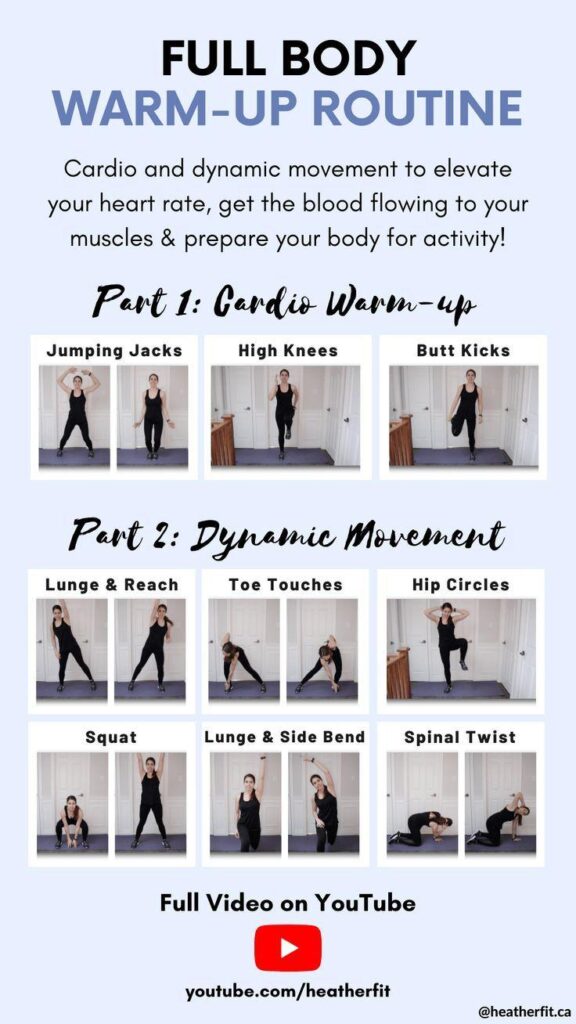In the ever-evolving world of sports and fitness, the importance of effective warm-up routines is gaining unprecedented attention. A recent article on ScienceDirect highlights how dynamic warm-ups are proving to be essential not just for enhancing athletic performance but also for preventing injuries. As athletes and coaches seek scientifically backed strategies to optimize training outcomes, this growing body of research underscores the vital role of dynamic movements in preparing the body for the demands of physical activity. This report delves into the key findings and expert insights that position dynamic warm-ups at the forefront of sports science.
The Science Behind Dynamic Warm-ups Boosting Athletic Performance
At the core of improved athletic output lies the remarkable effect of dynamic warm-ups on neuromuscular readiness. By engaging muscles through controlled, sport-specific movements, these warm-ups elevate core temperature and enhance nerve signal efficiency, leading to faster reaction times and increased power production. Research has identified that such activity triggers enhanced motor unit recruitment and synchronization, which are critical for explosive movements and agility during competition.
Key physiological benefits include:
- Increased blood flow and oxygen delivery to muscles
- Improved joint range of motion and flexibility
- Heightened muscle elasticity reducing strain risk
- Activation of the central nervous system for better coordination
| Factor | Effect |
|---|---|
| Muscle Temperature | Boosts enzyme activity and metabolic rates |
| Nervous System Activation | Enhances muscle fiber recruitment patterns |
| Joint Mobility | Facilitates smoother, injury-free motion |
| Increased Circulation | Delivers essential nutrients and clears metabolites |
Key Techniques in Dynamic Warm-ups to Maximize Injury Prevention
Implementing effective dynamic warm-up techniques is essential for optimizing muscular readiness and minimizing the risk of injuries during athletic activities. Key methods emphasize controlled, movement-based exercises that enhance blood flow, increase joint mobility, and prime the nervous system. Incorporating multi-planar movements mimics sport-specific actions and prepares the muscles and tendons for the demands ahead. Athletes benefit particularly from exercises such as leg swings, high knees, butt kicks, and arm circles, which collectively promote flexibility without compromising muscle activation.
Scientific research highlights the importance of integrating progressive intensity and neuromuscular control drills within warm-up routines. Below is a summarized guide outlining pivotal techniques recognized for their injury-prevention potential:
| Technique | Purpose | Sample Exercise |
|---|---|---|
| Dynamic Stretching | Increase flexibility and muscle elasticity | Walking Lunges |
| Plyometric Drills | Enhance explosive power and tendon resilience | Jump Squats |
| Neuromuscular Activation | Improve muscle firing patterns | Quick Ladder Steps |
| Motor Control Exercises | Boost coordination and balance | Single-Leg Hops |
Expert Recommendations for Incorporating Dynamic Warm-ups into Training Routines
Leading sports scientists emphasize the necessity of tailoring dynamic warm-up routines to the specific demands of each sport. Incorporating movements that mimic the key actions athletes perform during competition enhances both neuromuscular activation and joint mobility. Experts recommend practitioners focus on multi-planar exercises that progressively increase in intensity, ensuring muscles and tendons are properly primed to handle dynamic loads. For instance, integrating high knees, lateral lunges, and arm circles creates a balanced warm-up that prepares the entire kinetic chain.
Moreover, experts suggest adhering to these core principles for optimal integration of dynamic warm-ups into training:
- Duration: Maintain warm-ups between 10 to 15 minutes to maximize benefits without inducing fatigue.
- Progression: Start with simple mobility drills and gradually shift towards sport-specific, explosive movements.
- Consistency: Implement dynamic warm-ups daily before all training sessions and competitions.
- Individualization: Adjust based on athletes’ age, fitness level, and injury history to reduce risk.
| Warm-up Component | Recommended Exercise | Benefit |
|---|---|---|
| Mobility | Hip Circles | Enhances joint range of motion |
| Activation | Glute Bridges | Improves posterior chain engagement |
| Dynamic Stretching | Walking Lunges | Prepares muscles for functional movement |
| Neuromuscular | High Knees | Boosts reaction time and coordination |
Future Outlook
In summary, as cutting-edge research from ScienceDirect highlights, dynamic warm-ups are proving to be more than just a pre-game routine-they are a critical component in enhancing athletic performance and reducing injury risk. Coaches, trainers, and athletes alike are encouraged to integrate these scientifically backed exercises into their regimes, underscoring a shift toward more informed, effective preparation strategies in sports. As the evidence continues to mount, dynamic warm-ups stand out as a simple yet powerful tool to keep athletes performing at their best while safeguarding their long-term health.





